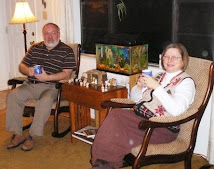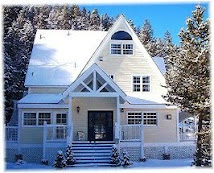
Our family's history with Mah-Jongg goes back to India, where my wife's grandparents (on both sides of the family) were missionaries. Mah-Jongg was allowed on the missions compound whereas card playing was not. Ironically, Mah-Jongg is a sort of card game that uses tiles rather than cards, and it is one of the most popular gambling games in the world, especially in Asia. Nevertheless, the missionaries in India played it, and passed it on to their children, who passed it on to their children. It is a fun game, even without wagering. When no money is involved, chips or other markers are used to keep score.

The first thing you need to know about the Mah-Jongg we play is that it has nothing to do with the solitaire game so popular today, especially when played on a computer. That game uses Mah-Jongg tiles instead of playing cards to create a multitudinous variety of solitaire games, but technically it is solitaire—not Mah-Jongg.

The Mah-Jongg our family knows and loves is played by four persons around a table (although I understand people play it this way online, as well). Our family has spent many enjoyable hours playing Mah-Jongg. We've shared the game with many of our friends and with our children, which extends the legacy of Mah-Jongg in our family to children's children's children (Jack Handey probably would not approve!).

Recently, we discovered that Mah-Jongg is (or at least was) very popular in the American Jewish community. The article (entitled Mah-Jongg, Jewish women have kept the game alive in North America) can be found here.

The origins of Mah-Jongg are shrouded in the mists of the past. There seems to be no consensus on who invented it or exactly when. It does seem clear, however, that it did not appear in its present form earlier than the mid-1800s.
"Mah-jongg's precursors may be centuries old, but the game most Americans know dates back only about 150 years. Around 1846, a servant of the Chinese emperor combined the rules of popular card games of the time, and replaced cards with tiles to create mah-jongg. The name itself means sparrows—an allusion to the pictures of birds often engraved on the tiles.
The advent of mah-jongg coincided with China's opening to foreign traders, after the First Opium War (1837-1842). One American businessman, Joseph Babcock, traveled to China on behalf of the Standard Oil Company in 1912 and brought the game back to America. He changed the numbers on the tiles to numerals with which Americans are familiar (1, 2, 3, etc.) and by 1920, Abercrombie and Fitch, then a sporting and excursion goods store, was the first place to sell mah-jongg in America. Throughout the 1920s, the game was a popular craze. Over time, to make the game more difficult and exciting, playing groups made up their own table rules."

The article goes on:
"In 1937, a group of Jewish women formed the National Mah Jongg League (NMJL), which to this day strives to maintain consistency in the game. Each year the League issues a card listing winning combinations of tiles (which change every year) and standard regulations. This stability helped the game to survive. But Jewish involvement in the League doesn't fully explain the Jewish mah-jongg phenomenon.
"In 1937, a group of Jewish women formed the National Mah Jongg League (NMJL), which to this day strives to maintain consistency in the game. Each year the League issues a card listing winning combinations of tiles (which change every year) and standard regulations. This stability helped the game to survive. But Jewish involvement in the League doesn't fully explain the Jewish mah-jongg phenomenon.
Perhaps the most important factor in mah-jongg's survival is the role it played in the bungalow colonies, popular Jewish vacation sites in the mid-20th century. In Borscht Belt Bungalows: Memories of Catskill Summers, Irwin Richman describes the Jewish vacation culture there: "By the middle of the century, mah-jongg had spread from the city to the suburbs and the vacation resorts, it went along with the Jews. The click, click of tiles and phrases like 'five bam' and 'two crak' filled the air many an afternoon at the large colonies."

More about the history and rules of Mah-Jongg can be found on the following links:



































5 comments:
LOVE IT...but you should add some of the pictures of us playing (and some of you beating the pants off of all of us!) - I think Jill has a couple :-)
Great synopsis! It always strikes me funny that the computer solitaire has become so popular; it was solitaire long before computers learned to shuffle tiles! It was a favorite pasttime of my Granddaddy Templin and mine, building the pyramid and making the matches, over and over again. A relaxing game for a slower paced time.....
Pam,
Done!
--UJ
Very nice :-) Jill thinks you should add the fun one of you gloating after wiping the floor with us too :-)
Oh my goodness ... there are three new posts here !!!! WOW !! You are a bloggin' maniac !! I love it !!!!!
And I love mah-jongg. Wish I could come over and play some right now ...
Post a Comment